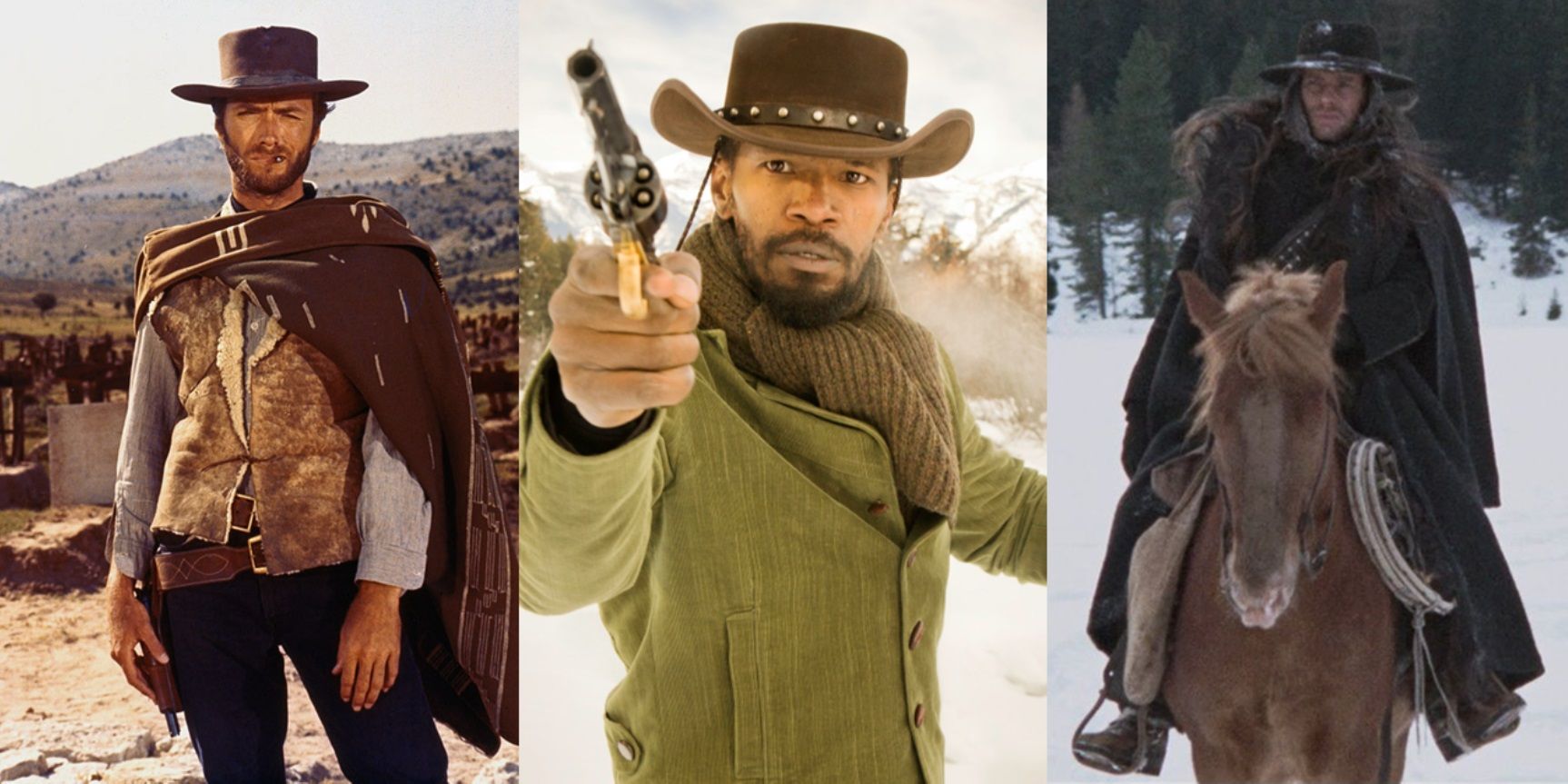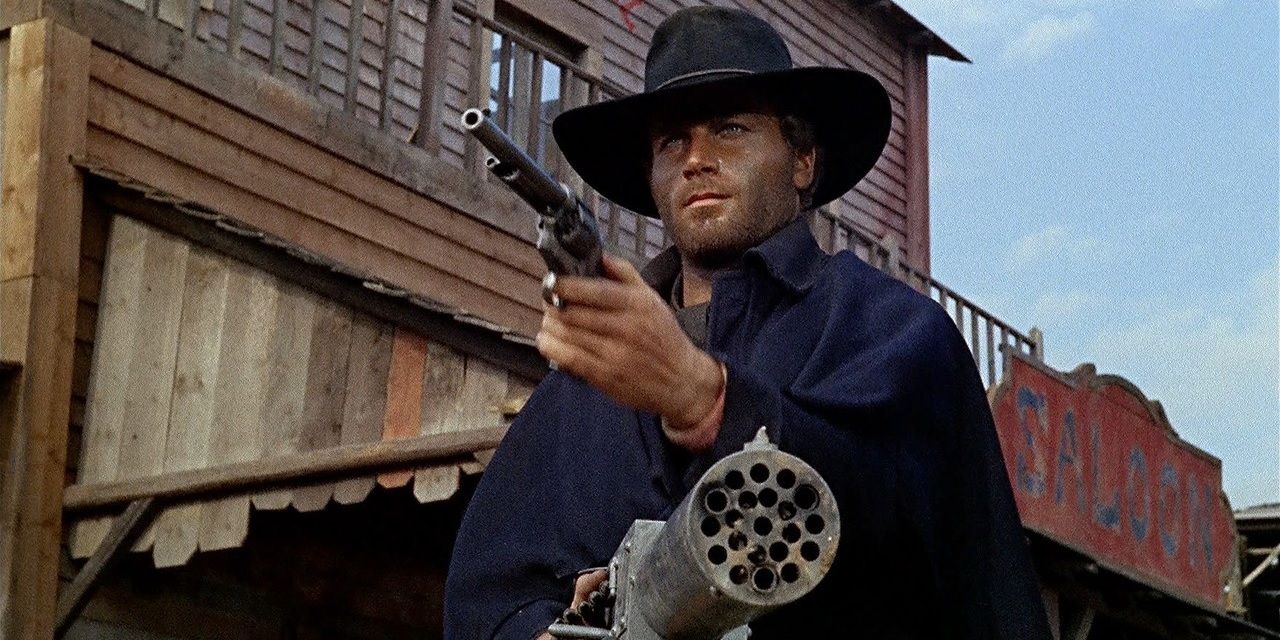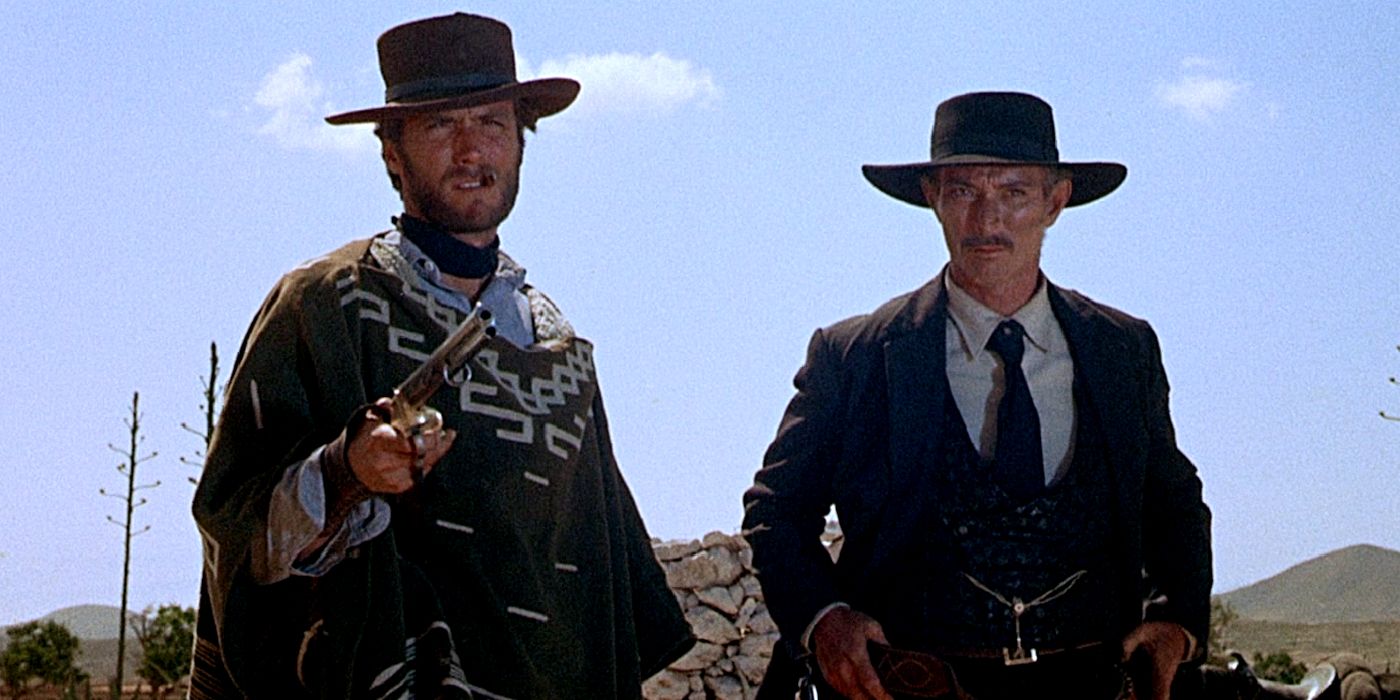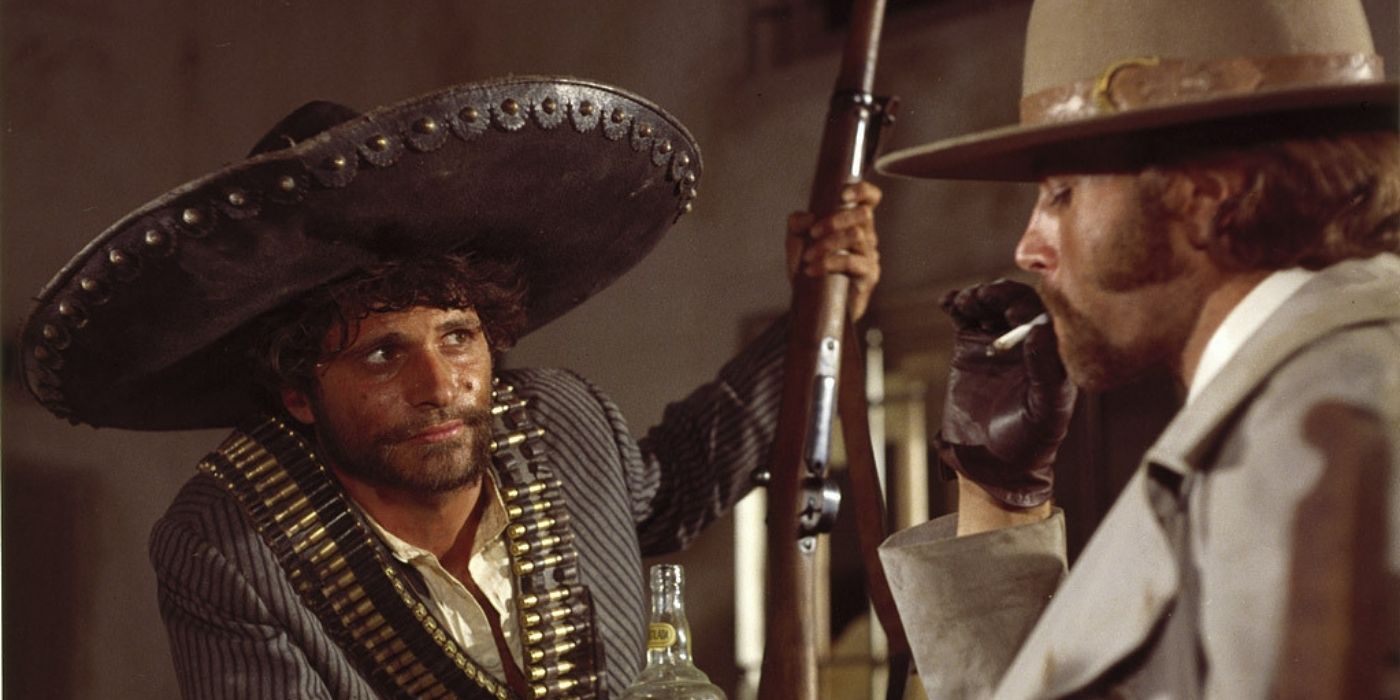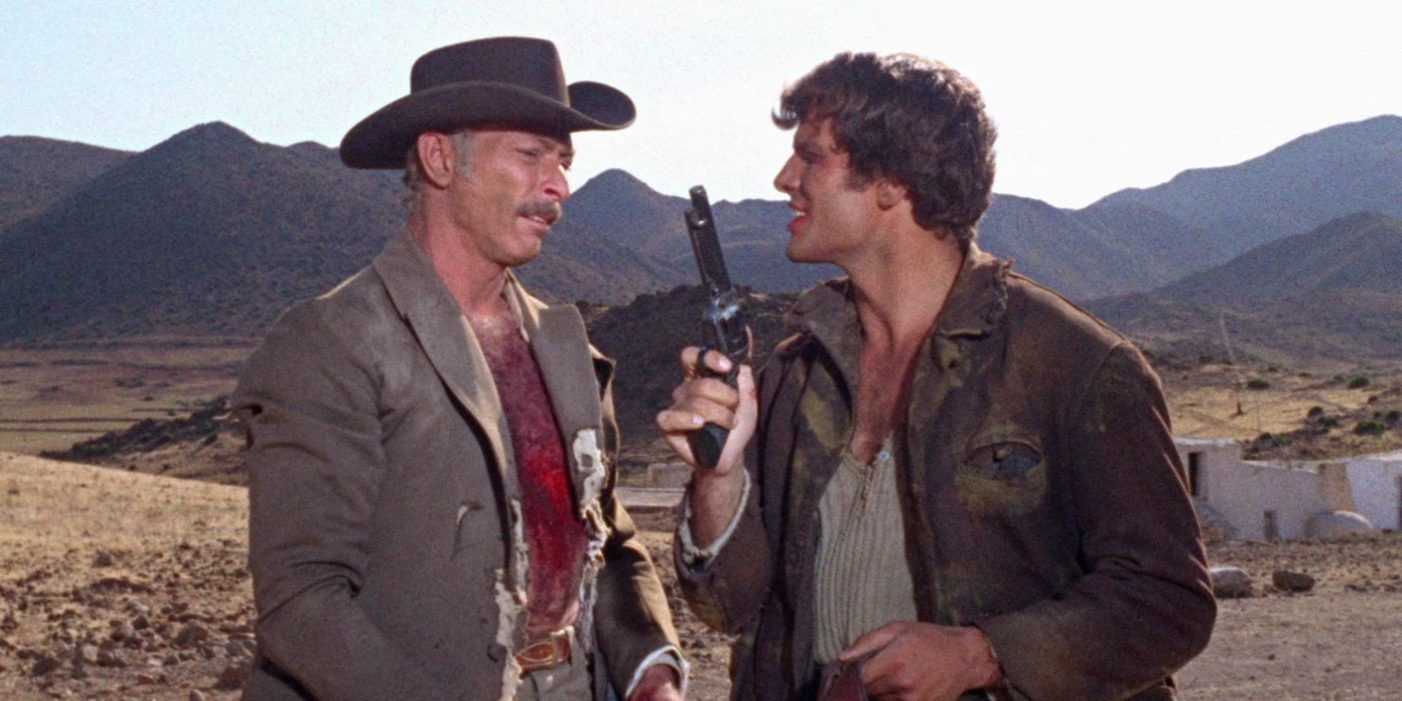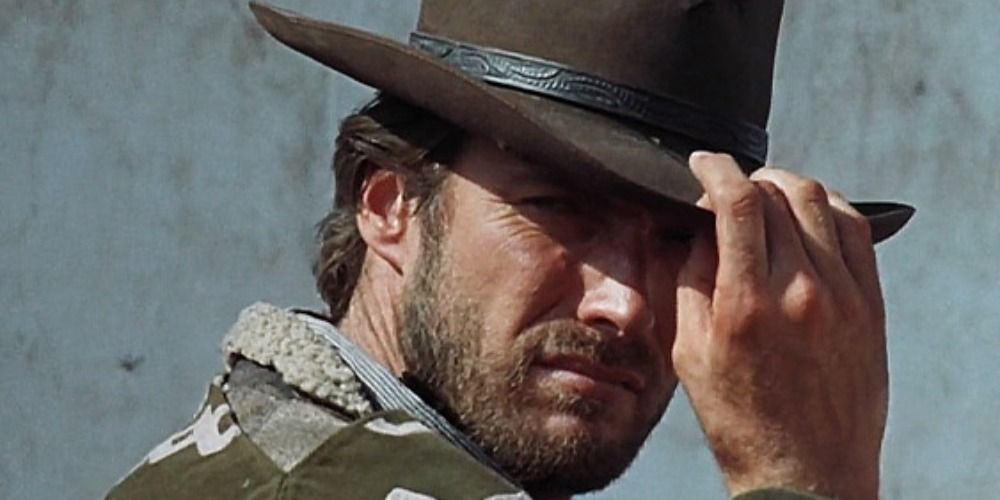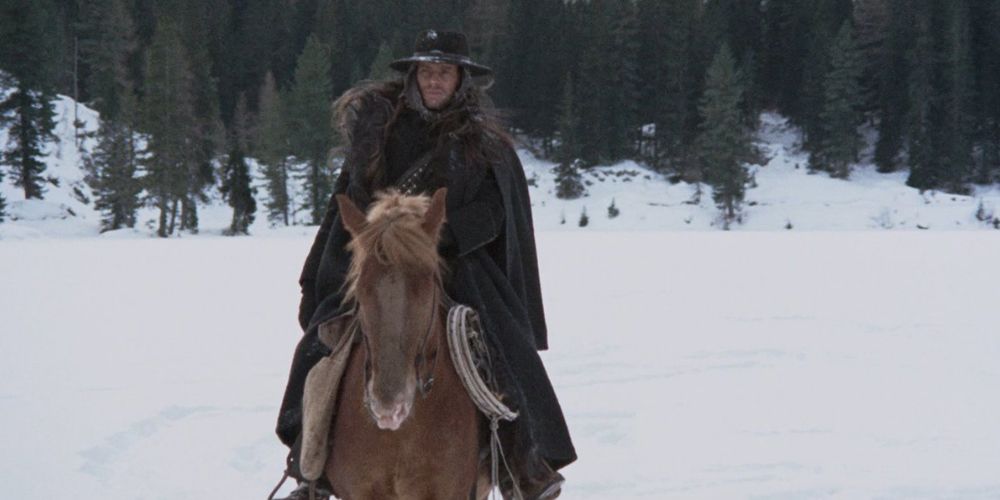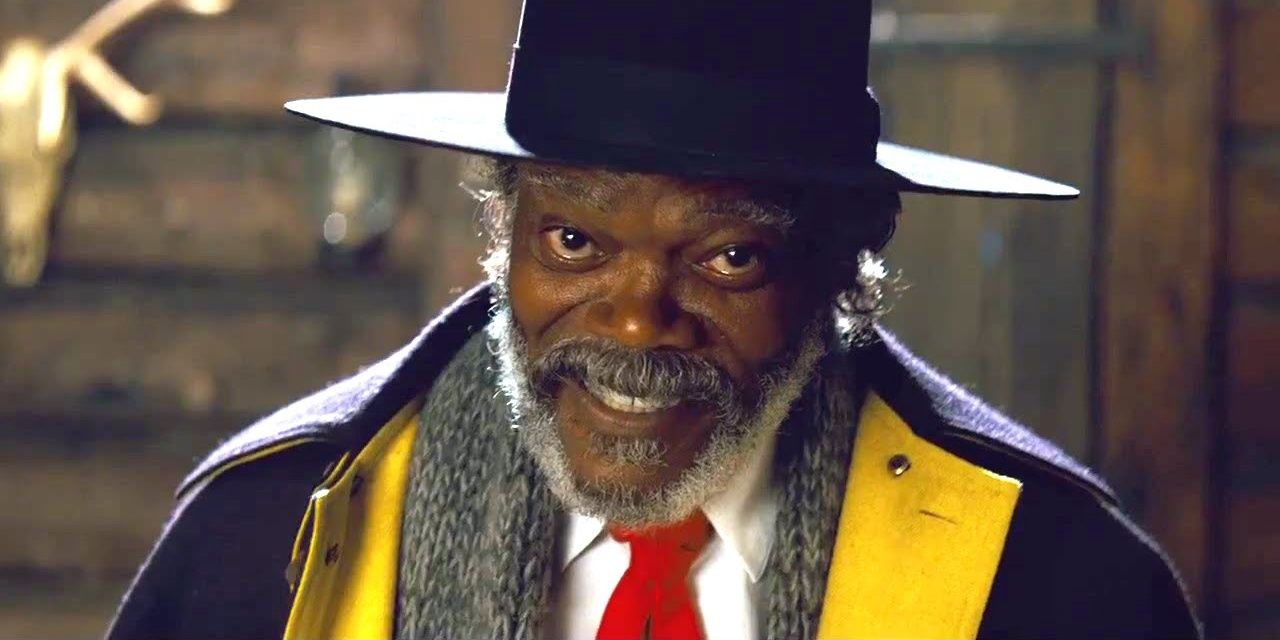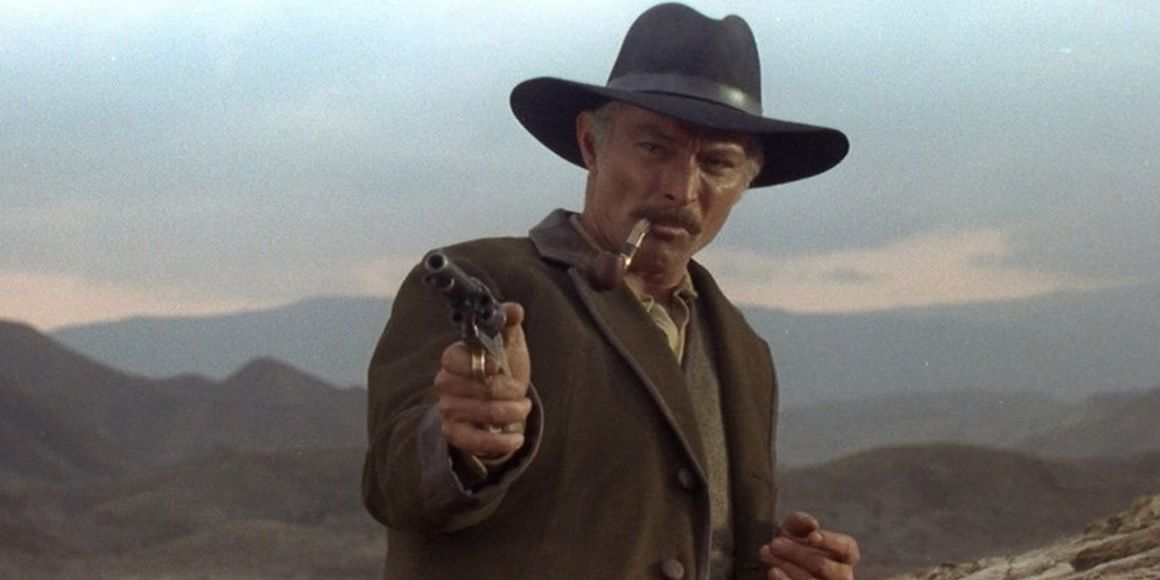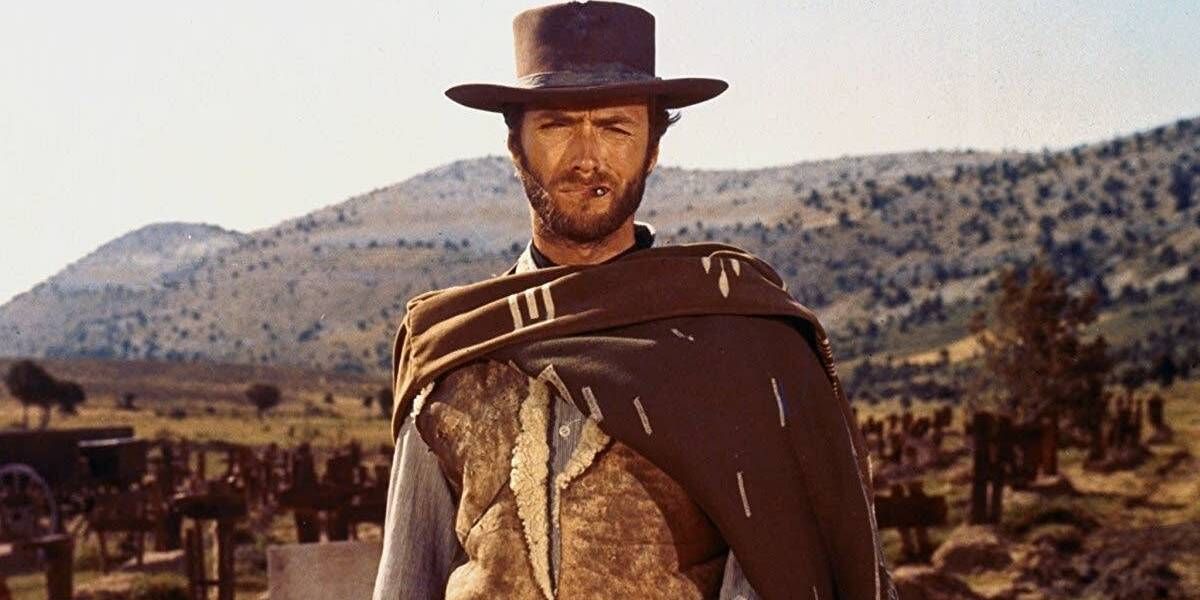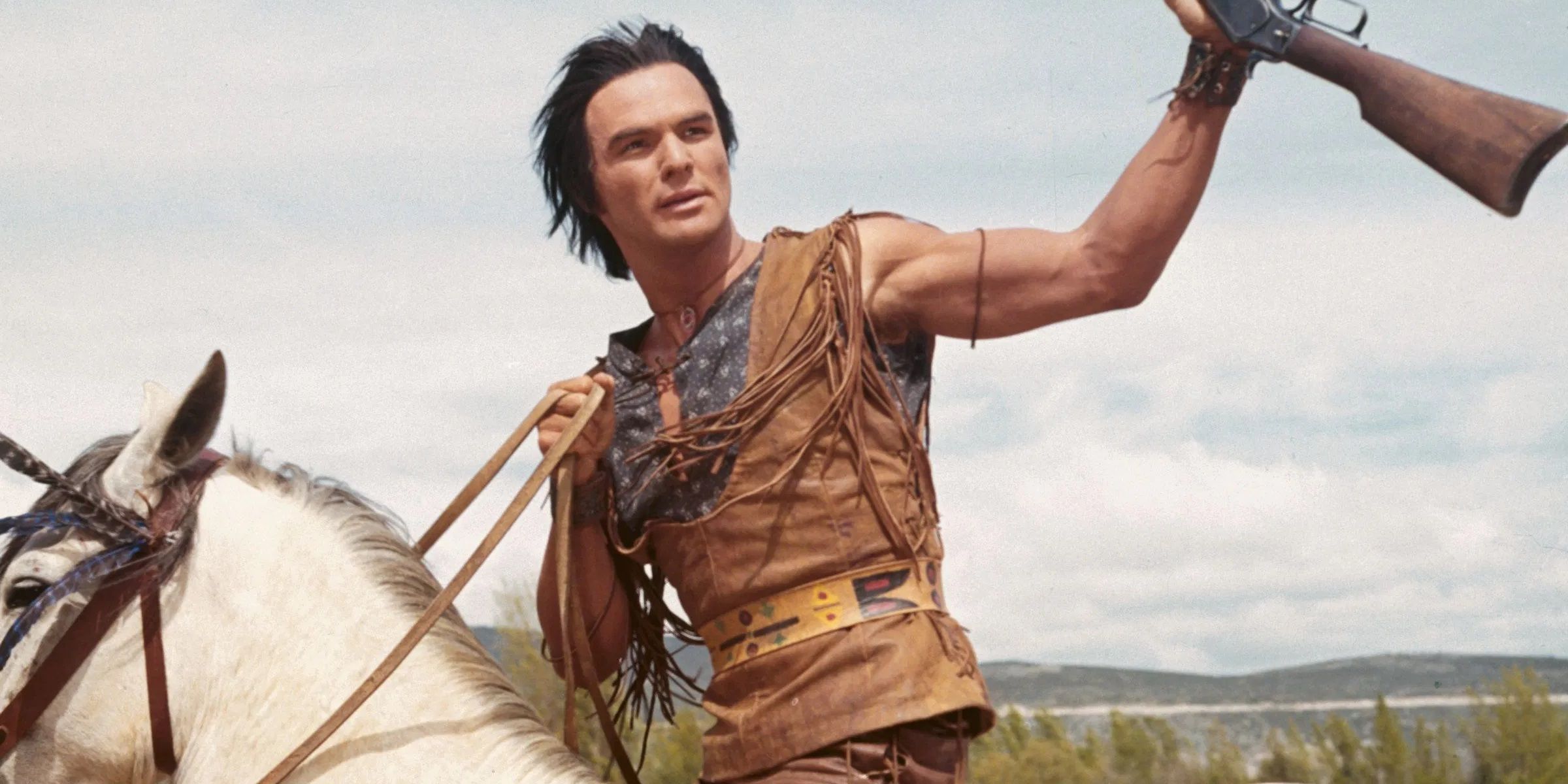Quentin Tarantino’s filmmaking has always been heavily influenced by the spaghetti western genre, particularly the works of Sergio Leone and Sergio Corbucci. The ear-cutting sequence in Reservoir Dogs is a nod to Corbucci’s original Django movie, the blistering wide shots of the Bride in the desert call back to Leone’s Once Upon a Time in the West, and Tarantino’s filmography features more armed standoffs than the Man with No Name could shake a stash of Confederate gold at.
But Tarantino didn’t make a full-blown spaghetti western of his own until he tackled America’s ugly history of slavery in his seventh directorial feature, Django Unchained. Django Unchained quickly became Tarantino’s highest-grossing movie and rejuvenated public interest in the spaghetti western classics.
Django (1966)
Tarantino borrowed from a lot of spaghetti western classics in Django Unchained, but the most obvious homage is to Sergio Corbucci’s Django. The writer-director took both his protagonist’s name and his bleak, brutal, gonzo vision of the American frontier from Corbucci’s groundbreaking 1966 masterpiece.
One of the early spaghetti westerns that pioneered the subgenre, Django stars Franco Nero as a bounty hunter who wants to avenge the love of his life. Like its Unchained variant, the original Django is a bittersweet love story wrapped in a blood-soaked western.
For A Few Dollars More (1965)
The middle chapter of Sergio Leone’s Dollars trilogy, For a Few Dollars More, sees two bounty hunters teaming up to take on a common enemy with a posse so big that neither of them could handle the job alone.
Clint Eastwood’s Man with No Name reluctantly teaming up with Lee Van Cleef’s Colonel Douglas Mortimer has parallels with Django and Dr. Schultz joining forces to infiltrate Candyland.
The Mercenary (1968)
Yet another Corbucci movie that Tarantino referenced in Django Unchained is 1968’s The Mercenary, another Franco Nero vehicle. In The Mercenary, a bounty hunter teams up with a peasant-turned-revolutionary to take on the entire Mexican army.
Jack Palance’s subversively camp villain – and particularly his death scene involving a blood-soaked pocket flower – influenced the creation of Leonardo DiCaprio’s sadistic slaver Calvin Candie in Django Unchained.
Day Of Anger (1967)
Riz Ortolani’s theme tune from the delightfully ultraviolent spaghetti western Day of Anger plays over Django’s training montage in the snow in the middle act of Django Unchained.
This Tonino Valerii-helmed gem similarly tells the story of a notorious gunslinger taking a student under his wing and letting his vengeful rage get the better of him. Lee Van Cleef’s Frank Talby is much more sadistic and ruthless than Christoph Waltz’s Dr. Schultz.
A Fistful Of Dollars (1964)
Sergio Leone’s A Fistful of Dollars, the first of three flawless entries in the Dollars trilogy, was one of the first spaghetti westerns – and it’s one of the most influential movies ever made, too.
It’s a not-so-loose, almost shot-for-shot remake of Akira Kurosawa’s seminal samurai movie Yojimbo, recontextualized in a lawless western town. Clint Eastwood’s “Man with No Name” character is a quintessential spaghetti western antihero that has inspired the conception of every character from Boba Fett to the Mandalorian to, indeed, Django Freeman.
The Great Silence (1968)
1968’s The Great Silence is another Corbucci gem that influenced Django Unchained. A mute gunfighter takes on a band of bounty killers determined to wipe out an entire town. The Great Silence culminates in one of the most unsettlingly dark endings in the history of the genre.
The bleakness of the story pairs beautifully with the uncharacteristically snowy setting. According to a piece that Tarantino wrote for The New York Times, The Great Silence inspired a similar snowbound sequence in Django Unchained: “[The Great Silence] takes place in the snow — I liked the action in the snow so much, Django Unchained has a big snow section in the middle of the movie.”
The Hateful Eight (2015)
After dipping his toes in the western genre for the first time with Django Unchained, Tarantino returned to that well for his next film. The Hateful Eight is the closest thing to a Tarantino whodunit, with a bunch of villainous strangers snowed into a haberdashery together on one fateful night.
While it draws from other genres, like Tarantino’s first western, The Hateful Eight has all the gruesome violence, gorgeous landscape cinematography, and morally ambiguous antiheroes of a classic spaghetti western.
Death Rides A Horse (1967)
In Death Rides a Horse, a young man seeks revenge for the murder of his family, which he was forced to witness as a little boy. In the opening scenes, this boy spends his childhood learning how to shoot, then goes out to track down the villains responsible so he can kill them one by one.
Spaghetti western icon Lee Van Cleef plays a gunslinger who takes the kid under his wing. Death Rides a Horse builds to a shocking twist that ups the ante of both the internal and external conflicts of the story.
The Good, The Bad, And The Ugly (1966)
The third and final entry in the Dollars trilogy, The Good, the Bad, and the Ugly, is one of the only spaghetti westerns to receive any praise or recognition from the kind of film scholars who usually look down their nose at violent, action-packed movies.
Like Django Unchained, The Good, the Bad, and the Ugly succeeds as both a grand, operatic, deeply cinematic western epic and a self-aware satire of its own well-worn genre.
Navajo Joe (1966)
Another Corbucci masterpiece, Navajo Joe, was one of the biggest influences on Django Unchained’s historical revenge fantasies. Navajo Joe, like Django Unchained, uses the violent cinematic sandbox of the western genre to address America’s ugly history of racial tensions.
A Native American warrior, the sole survivor of the massacre of his tribe, seeks vengeance against the evil, gun-toting white men responsible. The casting of white Burt Reynolds in the title role was a mistake, but the message holds up.

